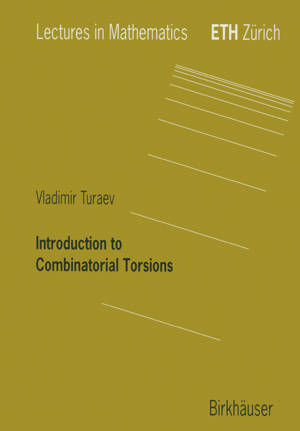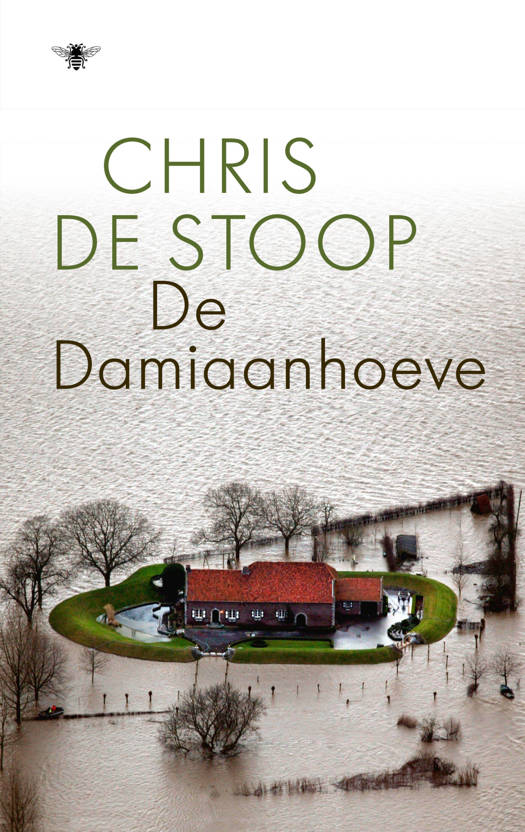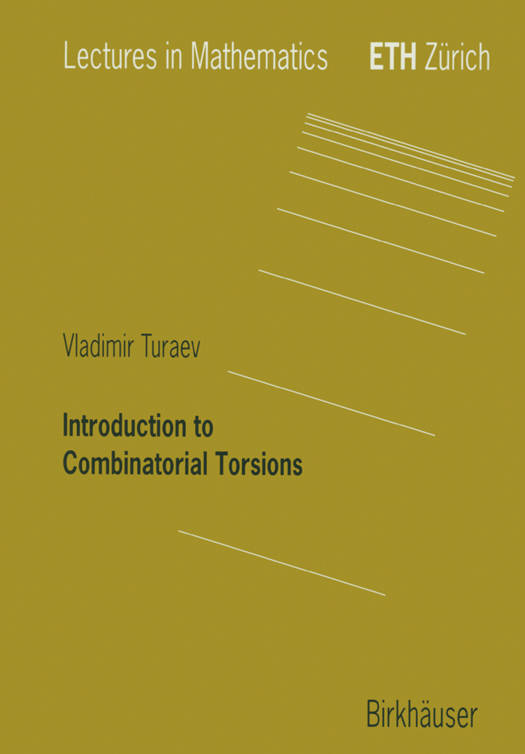
- Afhalen na 1 uur in een winkel met voorraad
- Gratis thuislevering in België vanaf € 30
- Ruim aanbod met 7 miljoen producten
- Afhalen na 1 uur in een winkel met voorraad
- Gratis thuislevering in België vanaf € 30
- Ruim aanbod met 7 miljoen producten
Zoeken
€ 58,45
+ 116 punten
Omschrijving
This book is an extended version of the notes of my lecture course given at ETH in spring 1999. The course was intended as an introduction to combinatorial torsions and their relations to the famous Seiberg-Witten invariants. Torsions were introduced originally in the 3-dimensional setting by K. Rei- demeister (1935) who used them to give a homeomorphism classification of 3-dimensional lens spaces. The Reidemeister torsions are defined using simple linear algebra and standard notions of combinatorial topology: triangulations (or, more generally, CW-decompositions), coverings, cellular chain complexes, etc. The Reidemeister torsions were generalized to arbitrary dimensions by W. Franz (1935) and later studied by many authors. In 1962, J. Milnor observed 3 that the classical Alexander polynomial of a link in the 3-sphere 8 can be interpreted as a torsion of the link exterior. Milnor's arguments work for an arbitrary compact 3-manifold M whose boundary is non-void and consists of tori: The Alexander polynomial of M and the Milnor torsion of M essentially coincide.
Specificaties
Betrokkenen
- Auteur(s):
- Uitgeverij:
Inhoud
- Aantal bladzijden:
- 124
- Taal:
- Engels
- Reeks:
Eigenschappen
- Productcode (EAN):
- 9783764364038
- Verschijningsdatum:
- 1/01/2001
- Uitvoering:
- Paperback
- Formaat:
- Trade paperback (VS)
- Afmetingen:
- 170 mm x 240 mm
- Gewicht:
- 263 g

Alleen bij Standaard Boekhandel
+ 116 punten op je klantenkaart van Standaard Boekhandel
Beoordelingen
We publiceren alleen reviews die voldoen aan de voorwaarden voor reviews. Bekijk onze voorwaarden voor reviews.











